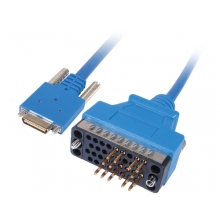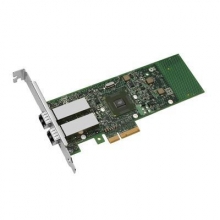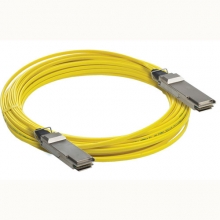- Optical Transceivers
- SFP+ Transceivers
- XENPAK Transceivers
- XFP Transceivers
- X2 Transceivers
- SFP Transceivers
- Compatible SFP
- 3Com SFP
- Alcatel-Lucent SFP
- Allied Telesis SFP
- Avaya SFP
- Brocade SFP
- Cisco SFP
- D-Link SFP
- Dell SFP
- Enterasys SFP
- Extreme SFP
- Force10 SFP
- Foundry SFP
- H3C SFP
- HP SFP
- Huawei SFP
- Intel SFP
- Juniper SFP
- Linksys SFP
- Marconi SFP
- McAfee SFP
- Netgear SFP
- Nortel SFP
- Planet SFP
- Q-logic SFP
- Redback SFP
- SMC SFP
- SUN SFP
- TRENDnet SFP
- ZYXEL SFP
- Other SFP
- FE SFP
- GE SFP
- OC3 SFP
- OC12 SFP
- OC48 SFP
- Copper SFP
- CWDM SFP
- DWDM SFP
- BIDI SFP
- Fiber Channel SFP
- Multi-Rate SFP
- SGMII SFP
- Compatible SFP
- GBIC Transceivers
- Passive Components
- Networking
- Cables
- Equipments
- Tools
- Special Offers


Industry News
Juniper’s new QFabric switching architecture could be a boon to transceiver makers
July 26, 2011In February, Juniper announced its QFabric switching architecture aimed at collapsing the traditional three-layer network where edge, aggregation, and core switches are replaced with distributed switches (single tier). This is one more competitive shot at Cisco with a unique product approach. In time, other switching competitors are sure to follow, and Cisco seems to have responded by hiring one of the key switch design executives away from Juniper!
The three components of Juniper’s QFabric architecture
July 26, 2011One might think that collapsing three tiers of switches to one would limit the overall volume of transceiver modules sold. However, a couple of factors about Juniper’s new offering provide reason for applause for transceiver makers: quality new technology that solves users’ problems tend to sell very well, and Juniper does not force its customers to buy transceivers from only itself, allowing less markup on the modules.
40Gb uplinks abound, but 100Gb in Datacom still a ways out
July 26, 2011Interop showcased almost every new switch with 10GbE links to servers as input that had 4 to 8 40Gbps QSFP uplink sockets for direct attach copper and optical links.
Broadcom’s 40 Gb switch based on Dune Networks technology
July 26, 2011Although 100Gb might be a better speed long term to provide uplinks for 10GbE platforms, 40Gb will do for now. In our view, 100Gb throughput in a standard MSA that switch OEMs can trust to be ubiquitous and cost effective is at least three years off.
Sales of optical transceivers declined 5% in Q1 2011
July 25, 2011Global sales of optical transceivers achieved new highs in Q4 2010 but declined by 5% in Q1 2011. Fibre Channel and Ethernet market segments led the decline, falling by close to 20% and 10%, respectively.
A Look Inside TIA 2011
July 25, 2011Vendors and carriers carefully planned their participation in TIA 2011. They evidently want to minimize their investments in this new entry on the trade show calendar until they better understand just what the event will cover and whom it will attract.



















































